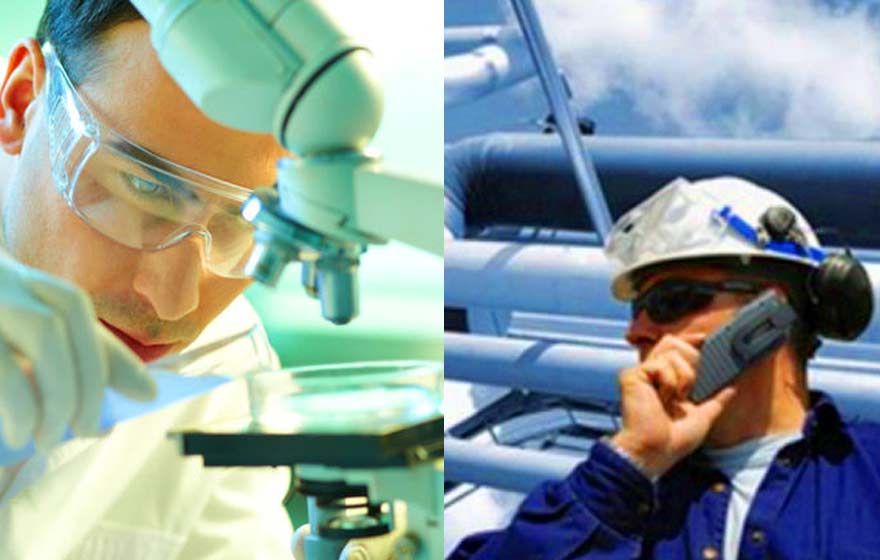The benefits of innovation for a revival of industrial activity are well established. And yet there have been cases of large companies lacking imagination or lagging behind in the markets. Yet we know that the very concept of innovation is directly related to the concept of enterprise. And when a company innovates, it is primarily to maintain or increase its market share, notably by improving its products. Here are a few examples.
Dn a small business (SME) that only markets a few products, if you don't innovate, you disappear. (1). If a company does not innovate for several years, its products age, competitors who have innovated offer more attractive products, which they can sell for more money. They regain market share. The company that has done nothing is no longer able to sell its aging products.
Without creating new products or modernizing old ones, the company ends up being overtaken by its competitors and dies!
But innovation is a risky process, many inventions never become products or are never sold. There are many obstacles along the way, and to overcome them we must gather around the "cradle of innovation" multiple skills...Abraham Moles (2) considered that one idea in ten became a product that was sold. We recall that Albert Einstein said: "A person who has never made mistakes has never tried to innovate".
The word innovation, as opposed to invention, implies that the product exists and is purchased by customers. Innovation is characterized by the introduction of something new into an established environment. Transposed to new products, the term applies only if public appropriation is successful. In fact, it is because a product is sold and used that the invention becomes an innovation. The willingness to undertake and sell is almost underpinned by the word! By extension, the concept of innovation encompasses the modernization of means of production and new means of distribution. One can also innovate in services.
Our major CAC 40 companies should be our "champions" for innovation because they can easily mobilize all the resources needed to "work" on innovation: finance, research, technological expertise, design, marketing. Because for this to work, all of these professions must be focused on the cradle of the new product.
Before 1973, companies were rooted in French terroirs, proud of their social role, their innovations, the conquest of new markets and the jobs and wealth they generated.
From the first oil shock onwards, the aim was to achieve high returns and reduce risks. Then, in companies, product creation and innovation were stopped, production was automated, and as this was not enough, production was relocated. Long before the current financial crisis, our large companies created an endemic crisis of innovation and industrial jobs in France. This often resulted in most companies stopping research and the creation of innovative products. Yet if an industrial company innovates and is successful, it can be the source of its future development and future.
Innovation presents certain risks but is a way to regain a competitive advantage ...
We can choose a few examples to show the interest and the risk of innovating...
Since the royal ice-cream parlours, Saint Gobain operated traditional ice cream factories. It was a matter of casting glass, melted in a furnace, onto a tray. The raw glass was then machined on both sides to be flat (it was said to be softened), then it was polished to find two parallel and transparent sides. This traditional process, since the 17th century, was a discontinuous process.

Photo: Saint-Gobain's glass pavilion in Sao Paulo celebrates its 350th anniversary worldwide with a travelling exhibition.
In the post-war years, Saint Gobain had used huge research budgets to innovate in ice making and attempt to make traditional ice continuously. Saint Gobain researchers and engineers had developed gigantic machines that poured glass continuously, then automated the surfacing (sand machining between melting tables) and polishing (with vibrating wheels, felt and iron oxide).
Those machines we used to call the Twin and Jusant consumed a lot of energy. They were technically outdated, from their development in 1964, by the "Float-glass" invented by the English company Pilkington in 1952.
BSN, Saint Gobain's smaller competitor, has adopted the Float-Glassafter its development in the 1960s. This new process was much more economical in terms of investment and energy expended. Free cash flow enabled BSN to attempt a takeover bid for Saint Gobain in 1968.
Missing out on this innovation cost Saint Gobain a lot of money, and they had to abandon the Twin and Jusantprocess, buy back the Float-Glass and pay royalties to Pilkington for 20 years. Saint Gobain had "missed the boat" because "it wasn't by perfecting the candle that electricity was invented." (3).
At Saint Gobain, the tradition of research and innovation, even in times of economic downturn (from 1973 onwards), was not lost, but concentrated on the traditional "trades" of Saint Gobain, which no longer sought to enter new markets. Research and development budgets were reduced. Saint Gobain invented double glazing with high insulating power, then self-cleaning glass. But it has never questioned "its professions", which are defined quite narrowly.
For example: the thin glasses that were already being talked about internally in 1978 have still not been developed and Apple has had the thin glass for its screens manufactured by Asians. Saint Gobain, which dreamed of these thin lenses for the automobile industry as early as 1980, has not yet developed them?
Another example: the tempered glass radiators, which the Saint Gobain development centre (CDI) had created in 1978 and which were ready to be launched, were never marketed by Saint Gobain... And yet the product was a viable innovation that was successfully marketed under the "Campaver" brand name by an industrialist, a radiator manufacturer, who took a few more years to develop it.
This example is taken from a major French company, but other examples could be found in all major French companies. The "entrepreneurial" profession was abandoned in order to best manage the available potential with as few jobs as possible.
On the other hand, disruptive innovation can be a success and revive an industry.
In the scooter market, the risk of falls has always been a sales barrier.
Since its release in 2000, the BMW 125 C1 has been a concept that has not gone unnoticed. It had protections that allowed the pilot, thanks to a rigid structure, to attach under the roll bar. This effective but heavy system made it possible not to wear a helmet. Its price was high. He found some customers. But the 125 C1 didn't find its public because its handling was not so good. The masses and the rather high centre of gravity made it impossible to slip through the traffic.
This scooter was stopped by BMW in 2003. Unfortunately, the research and tooling to start manufacturing must have been expensive for BMW and not amortized.

We can also give the positive example of the Piaggo MP3, a three-wheeled scooter with much improved stability. This scooter has two wheels at the front, articulated by an innovative parallelogram system. It can tilt through corners like any other two-wheeler. A system called Roll-Lock allows the parallelogram to be blocked at standstill or idle speed. This allows the driver to avoid having to put his foot on the ground when stopped at a red light.
The top-of-the-range model is still worth 9800 Euros while a normal scooter, for example the Peugeot 250, is worth around 1400 Euros. We can see that European workers can be well paid to make this scooter and that this innovation, enhanced by good design, is a great competitive advantage.

Dyson project N223 (first robot vacuum cleaner of the brand?)
Another example: The Englishman James Dyson, a designer who became an appliance manufacturer, is exemplary. He created a fast-growing company and built his entire strategy on innovation. Created in 1992, his eponymous company already employed 2500 people in England in 2006. Its turnover was 800 million Euros.
He started with the bagless vacuum cleaners he developed at length, then created washing machines, fans without visible blades, instant hand dryers. The novelty, beauty and efficiency of Dyson products make them an incentive to buy, even though they're often much more expensive than products with much the same function.
But James Dyson's discoveries and new features make these products irresistible.
Innovation that is relevant to the user is likely to succeed, and in this case workers' wages are not an issue, as the margins on these products are high. These innovations, perceived as additional services by the users, give a decisive competitive advantage.

(1) See Bertrand Bellon's book "Innovate or Disappear" published by Economica.
(2) Abraham Moles was a researcher in the sociology of innovation at the University of Strasbourg. He founded the Micropsychology Society of Strasbourg and worked on the Theory of Design.
(3) Pierre Gilles de Gennes used this sentence to talk about innovation












